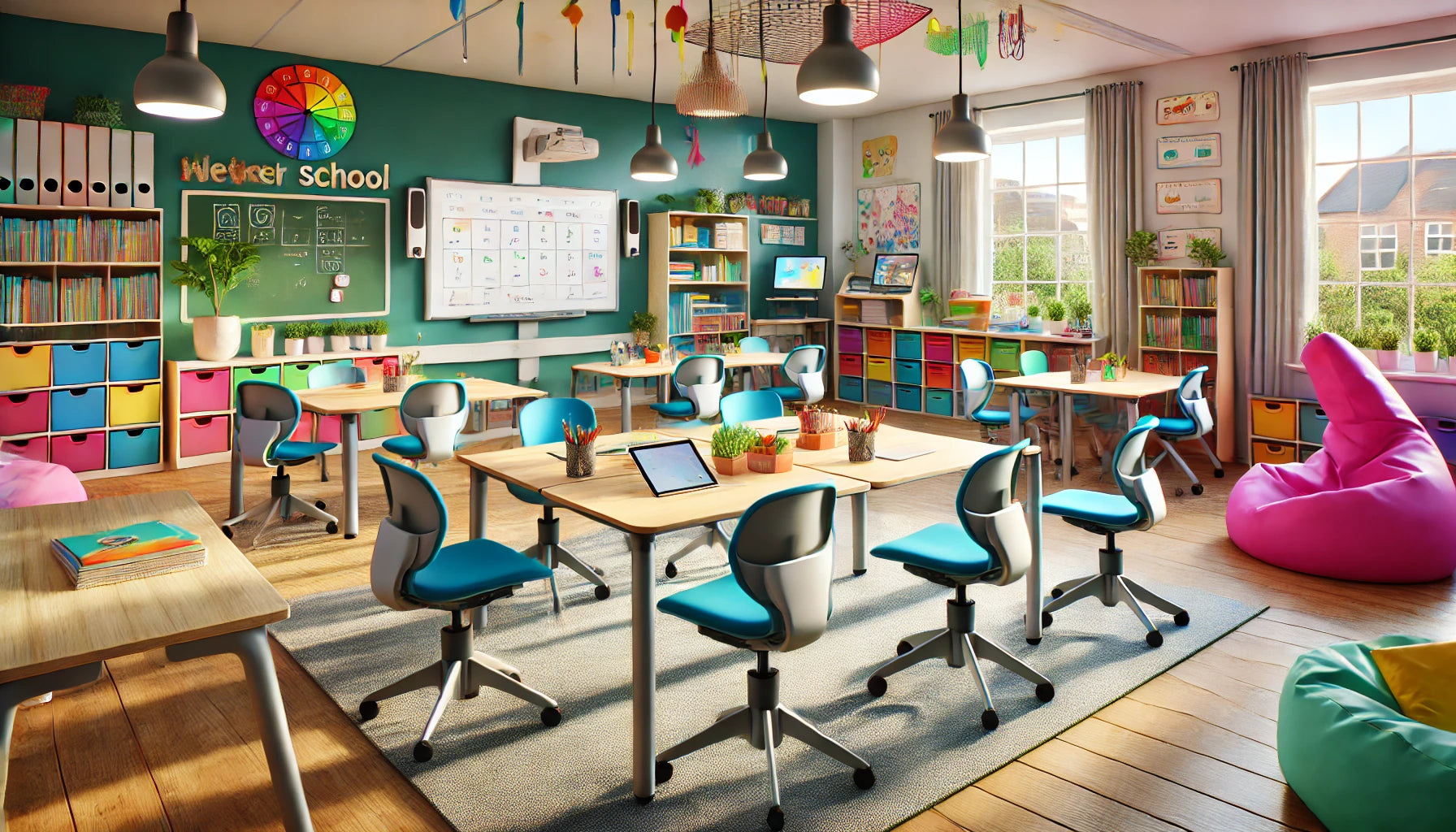Open Mon - Fri 9am to 5pm

The Ultimate Guide to Choosing School Furniture
School furniture creates a functional, comfortable, and engaging learning environment. From desks to seating, here’s everything you need to know to make the best choices for your classroom.
What is the Best Material for School Furniture?
Durable materials like solid wood, metal, and high-quality plastic are ideal for school furniture. These materials withstand daily wear and tear while remaining lightweight for easy movement and cleaning. Look for eco-friendly and non-toxic options to prioritise student safety.
What Are the Most Common Types of School Furniture?
School furniture typically includes:
- Classroom desks and chairs: Designed for individual or group learning.
- Teacher desks: Equipped with storage for classroom essentials.
- Bookshelves and storage units: Keep supplies organised.
- Collaborative tables: Encourage teamwork and creativity.
- Flexible seating: Beanbags, stools, and standing desks support diverse learning styles.
How Does Ergonomics Impact School Furniture Choices?
Ergonomic furniture improves posture, focus, and overall comfort. Adjustable desks and chairs ensure proper alignment for students of varying ages and sizes, reducing strain and supporting healthy development.
What size of furniture is best for different age groups?
- Early Years (ages 3-5): Low tables and chairs, with 260-300mm seat heights.
- Primary School (ages 6-11): Desks and chairs with seat heights of 340-380mm.
- Secondary School (ages 11-18): Standard desks and chairs, with seat heights of 460mm.
When selecting furniture, consider the average student height for your target age group.
How Can School Furniture Enhance Learning?
Flexible and modular furniture promotes collaboration and engagement. Options like movable desks and writable surfaces foster creativity and allow teachers to adapt the space to different activities. Comfortable seating minimises distractions, helping students focus.
What Should UK Schools Consider When Buying Furniture?
- Durability: Choose high-quality furniture to save costs over time.
- Flexibility: Opt for modular designs to adapt to changing classroom needs.
- Safety: Prioritise rounded edges, stable designs, and non-toxic finishes.
- Budget: Balance quality with affordability, focusing on essential pieces first.
The right school furniture creates a supportive learning environment that fosters student success. When outfitting your classrooms, prioritise durability, ergonomics, and adaptability. With these considerations in mind, you’ll transform your space into an effective and inviting place for education.


